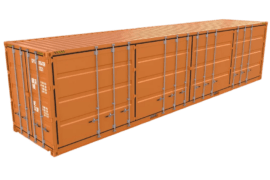Plastic Injection Molding is the process of using high pressure to push molten plastic into a mold. The main purpose is to create useful products when cooled and solidified in shape set in the mold.
An injection screw is widely used in this process because of its versatility in creating different shapes and sizes during one cycle, which reduces overall costs for molded products.
The screw pulls the plastic into the mold, and its geometry determines the part geometry – which directly affects cycle time. A long cycle time costs more money than one that does not exceed a certain amount of time. The goal is to reduce production costs while maintaining product quality with high-volume output.
Most manufacturers suggest using screws made of the same material as the final product, but this can increase costs and time to market.
The best screws for plastic injection molding are those that do not exceed cycle times and minimize torque required throughout the injection. They also need to be created with minimal maintenance.
There are many types of screws available on the market, but some are better for certain applications than others.
There are also different types of plastic you can use in injection molding. One of the most popular plastics to use in injection molding is nylon plastic due to its durability and wide range of usage. It’s great for bearing and wear applications and is quickly replacing many metals in the manufacturing industry.
Here is a list of some of the best injection screws out there:
Reciprocating Screw
The reciprocating screw is one of the most common screws found in injection molding, and they are used for general purpose applications.
This screw features an external part with a width that varies between 50% before the start of the thread to 10% at its end, which provides for proper melting and plastic flow. This type of screw is also self-cleaning, so it can get rid of the material residue that has built up.
The material then goes through the compression zone at high pressure, where it is mixed with heat and forced into the barrel’s channels for injection. One disadvantage to this screw is that it typically requires more maintenance than other types.
Cavity Screw
This screw has a double thread, which provides for optimal plastic flow. It also features an external part with a constant width of 20% to 40%. The cavity screw requires less maintenance than other types, and it is suitable for both single-cavity and multi-cavity injection molding machines.
The material then goes through compression before reaching the injection zone. After that, it is ready to be injected into the mold, where it takes the shape of the product being produced.
The single-thread screw features a long body with a 20% or 30% width. It’s considered one of the best screws for plastic injection molding because it provides optimal flow and gives uniform pressure distribution.
Conveyor Screw
The conveyor screw is very similar to the single-threaded screw, but it features two parallel threads that are connected by an unbroken thread. This type of screw offers low shear rates and is best paired with machines that produce high-temperature resins with a specific gravity of 0.8 or higher.
This style of injection screw has a straight body with grooves that spiral the entire length of the screw. This type of screw has two or more threads and is often used with transfer screws and other types of injection screws to enhance flow and pressure distribution.
A side-rotating screw features one continuous thread with no unbroken threads, grooves, or accessory threads.
Ram Screws
Ram screws produce high injection pressures and shear rates, which makes them ideal for materials that produce thick sections and clamping units.
This type of screw is characterized by a large length-to-diameter ratio and no unbroken threads. This style of screw follows the ram stroke and is usually implemented with transfer screws or other types of injection screws.
Rotary Screws
A rotary screw has a continuous spiral tool path and is used in material removal applications. This type of screw also features a large length-to-diameter ratio. It is usually implemented with transfer screws or other types of injection screws but can also be attached to an independent drive unit for use as an independent machine.
Conclusion
So, what are the best injection screws for plastic injection molding? It really depends on your specific application. However, rotary screws offer increased control and vacuum pressure; meanwhile, reciprocating screw designs are designed for higher throughput and lower injection pressures. While there is no such thing as a perfect screw for plastic injection molding applications, finding one that’s close enough can be the difference between rapid, profitable rates and oh-so-slow production speeds.
Thank you for reading!






